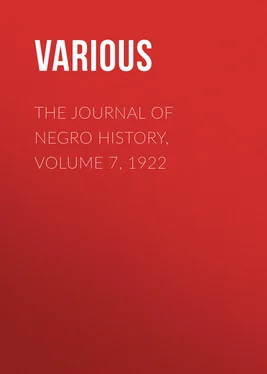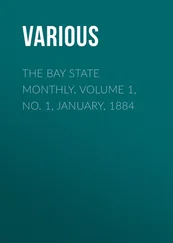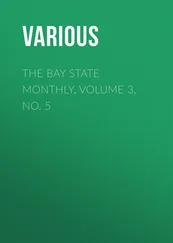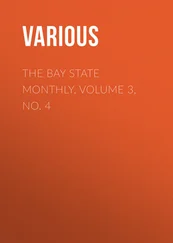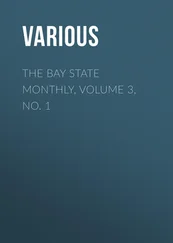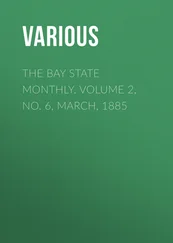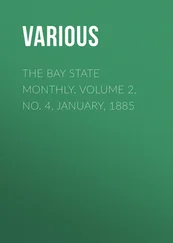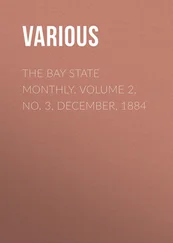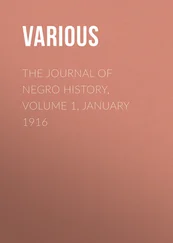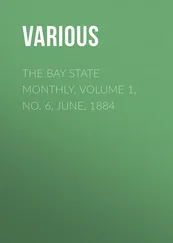Various - The Journal of Negro History, Volume 7, 1922
Здесь есть возможность читать онлайн «Various - The Journal of Negro History, Volume 7, 1922» — ознакомительный отрывок электронной книги совершенно бесплатно, а после прочтения отрывка купить полную версию. В некоторых случаях можно слушать аудио, скачать через торрент в формате fb2 и присутствует краткое содержание. Жанр: foreign_antique, periodic, История, foreign_edu, на английском языке. Описание произведения, (предисловие) а так же отзывы посетителей доступны на портале библиотеки ЛибКат.
- Название:The Journal of Negro History, Volume 7, 1922
- Автор:
- Жанр:
- Год:неизвестен
- ISBN:нет данных
- Рейтинг книги:3 / 5. Голосов: 1
-
Избранное:Добавить в избранное
- Отзывы:
-
Ваша оценка:
- 60
- 1
- 2
- 3
- 4
- 5
The Journal of Negro History, Volume 7, 1922: краткое содержание, описание и аннотация
Предлагаем к чтению аннотацию, описание, краткое содержание или предисловие (зависит от того, что написал сам автор книги «The Journal of Negro History, Volume 7, 1922»). Если вы не нашли необходимую информацию о книге — напишите в комментариях, мы постараемся отыскать её.
The Journal of Negro History, Volume 7, 1922 — читать онлайн ознакомительный отрывок
Ниже представлен текст книги, разбитый по страницам. Система сохранения места последней прочитанной страницы, позволяет с удобством читать онлайн бесплатно книгу «The Journal of Negro History, Volume 7, 1922», без необходимости каждый раз заново искать на чём Вы остановились. Поставьте закладку, и сможете в любой момент перейти на страницу, на которой закончили чтение.
Интервал:
Закладка:
They began the construction of a church with the help of such men and women as Charles Lemon, Charly Wilson, Eliza Wilson, William Crusoe, George Brown, Mary Brown, William Sewall, Margaret Waters, and Eliza Johnson. After having been organized for a little while, they bought a lot on the corner of what is now known as 28th and O Streets, Georgetown. 80Things seemed favorable in the beginning, but the enemies of the church were busy those days putting temptation in the path of the Negro and betraying him unto his enemies. Bondmen, according to the slave code, were not allowed to meet or hold any kind of meeting unless a white man was present. Nor were they allowed to be out after ten o'clock at night without a pass, or to have two or more congregate on the street at one time. If they did any of these things, they thereby violated the sacred laws of bondage and suffered imprisonment and persecution. Thus handicapped in their worship, they, like Paul and Silas, prayed for a deliverer, and he came in the person of a young lawyer from Philadelphia, who had taken up the cause. By his earnest endeavors in their behalf, they were released without being sentenced to jail or whipped. But, nevertheless, they were driven out of Georgetown, across Rock Creek, and into Washington, where they worshipped for a while in the house of William Beckett on the corner of 23d and L Streets.
A short time afterwards they bought the lot where this church now stands and built thereon a frame chapel which was contemptuously called the Horseshoe Church. After they had been there but a short time, there was a funeral at the chapel one day. Across from the chapel the Hibernian fire company was stationed. While the funeral services were being held in the chapel, two of these firemen came across the street and while one of them got inside of the hearse the other one got up on the driver's seat and drove all around the streets, while the people were out looking for the hearse. When they came back, the one who was inside got out and said that he was Lazarus risen from the dead. This act so inflamed some of the white gentlemen that they had the firemen arrested and prosecuted. These two impious gentlemen became so indignant because of their arrest that they set fire to the chapel and burned it to the ground. These communicants, being homeless again, went back to the house of William Beckett on L Street and commenced to rebuild. This time they succeeded in erecting a brick building, a portion of which stands today.
The John Wesley African Methodist Episcopal Zion Church was organized in 1849 at the home of John Brent on Eighteenth and L Streets. Among the founders were John Brent, W. H. Johnson, John Brent, Jr., William V. Ingram, Arnold Bowie, Charles Wilson, Joseph Conner, Edward Curtis, and Gilbert Joy. These communicants then purchased property on Connecticut Avenue and built thereon a simple frame building into which they moved in 1851. 81This church finally bought the old Berean Baptist Church property on Eighteenth Street, under the pastorate of Dr. B. J. Bolding, in 1902.
The ministers who pastored the congregation while it worshipped in Connecticut Avenue were Abraham Cole, J. B. Trusty, N. F. Turpin, J. H. Hamer, H. F. Butler, Nathaniel Stubbs, Sampson Talbert, S. T. Jones, John V. Givens, S. T. Henry, G. W. Bosley, S. S. Wales, J. W. Smith, J. P. Thompson, Jesse Cowles, W. A. Cypress, J. A. Williams, J. B. Small, B. J. Bolding, R. H. G. Dyson, D. H. Anderson, R. A. Fisher, J. J. Clinton, and J. H. McMullen. Those who served the body in Eighteenth Street were Rev. L. W. Kyles, W. A. Blackwell, P. H. Williams, C. C. Alleyne, and Dr. William C. Brown. John Wesley Church has had at different times six pastors, who later were elected to the bishopric. These were Bishops Sampson Talbert, J. J. Clinton, J. P. Thompson, S. T. Jones, J. B. Small and John Wesley Smith, all of whom are deceased. Among the officers of the church may be mentioned Gilbert L. Joy, who was made secretary of the Trustee Board in 1864, and served thirty-two years in that capacity. He had the enviable record of being a trustee of this church for forty-three years, a longer period than that of any other person connected with it, and he is still an active member.
The awakening of John Wesley A. M. E. Zion Church, characterized by the selling of its property on Eighteenth Street to purchase at the same time the edifice on Fourteenth and Corcoran Streets for $61,000, is significant. It is the most important event in the history of Zion Church in Washington. The Zion Church long needed a larger representative edifice in this city. This advanced step was taken, and under the leadership of Dr. W. C. Brown and Dr. W. O. Carrington the progress of the congregation has been epochal.
The Galbraith African Methodist Episcopal Zion Church was founded in 1859. That year five members of Zion Wesley, under the leadership of Samuel Payne, withdrew and organized a church in a small house on L Street between Third and Fourth Streets. They subsequently built a house of worship near New York Avenue. Robert H. G. Dyson who had been active as a class leader and chorister in Zion Wesley, became the first pastor. It developed from its little frame church on L Street, Northwest, into a larger congregation in the modern structure on its present location, under N. J. Green, the pastor in charge. This church has figured conspicuously in the religious, moral and civic uplift of the city. It has been served by an array of prominent ministers, chief among whom are J. Harvey Anderson, J. S. Coles, Wm. Chambers, J. B. Colbert, H. P. Kyler, William Dixon, S. L. Corrothers, George C. Clement, and William D. Battle. During Mr. Battle's administration the church was relieved of its long-standing debt and the well begun work was steadily developed. 82
The next efforts in the District of Columbia were of the Baptists. Albert Bouldin, who began public prayer services near Fourth and L Streets in 1857, was a prominent influence in the organization of the Third Baptist Church. 83On June 20, 1858 there was held a council of ministers at which were present G. W. Sampson, Chauncey A. Leonard, A. Rothwell, Lindsey Muse, Evans Stott, Henry H. Butler, Sandy Alexander, and L. Patten. There were also the following laymen: Joseph Pryor, Joseph Alexander, N. Nookes, Henry Scott, John Minor, Charles Alexander, and Austin Robinson. The trustees were William B. Jefferson, Joseph Alexander, Henry Scott, Charles Alexander, Vernon Duff, and Henry Nookes, who assisted in effecting the organization and served it as the first deacons.
In 1863 there was secured on Fourth and L Streets a lot on which the people began to erect their meeting house. On account of disputes, four years afterward it became necessary to look elsewhere, and William B. Jefferson became the controlling spirit. Then a lot was purchased on Franklin Street between Fourth and Fifth at a cost of $1,198.50. In September, 1871, the church was dedicated. Rev. D. W. Anderson, at that time pastor of the Nineteenth Street Baptist Church, delivered the sermon. After a lapse of thirteen years, August 2, 1884, another lot situated on the corner of Fifth and Que Streets was purchased. 84The next forward movement was toward the erection of a new building which was completed July 1893 at a cost of $26,000 and dedicated the fifth Sunday of July 1893. 85
There soon followed another significant undertaking. After preaching regularly to four persons for four years, Sandy Alexander organized on October 5, 1862, the First Baptist Church of West Washington. Two of the four pioneer members were from churches in Fredericksburg, Virginia. Dr. G. W. Sampson, president of Columbian College, subsequently Columbian University, now the George Washington University, was of great service to Mr. Alexander in this work of the organization of this church. The church was first located on the corner of Greene and Beale Street, Georgetown, where it remained one year, after which a lot was purchased at the corner of Dumbarton and 27th Streets and a large frame building was first constructed at a cost of $15,000. 86From this church there have been regularly organized the Macedonia, the First Baptist Church of Rosslyn, Virginia, and the Memorial Baptist Church in Maryland.
Читать дальшеИнтервал:
Закладка:
Похожие книги на «The Journal of Negro History, Volume 7, 1922»
Представляем Вашему вниманию похожие книги на «The Journal of Negro History, Volume 7, 1922» списком для выбора. Мы отобрали схожую по названию и смыслу литературу в надежде предоставить читателям больше вариантов отыскать новые, интересные, ещё непрочитанные произведения.
Обсуждение, отзывы о книге «The Journal of Negro History, Volume 7, 1922» и просто собственные мнения читателей. Оставьте ваши комментарии, напишите, что Вы думаете о произведении, его смысле или главных героях. Укажите что конкретно понравилось, а что нет, и почему Вы так считаете.
